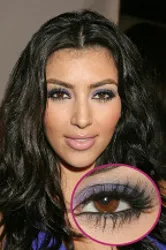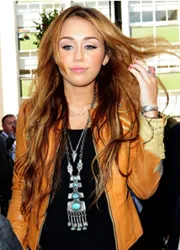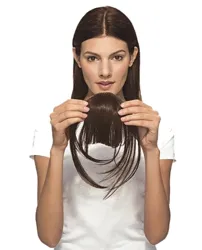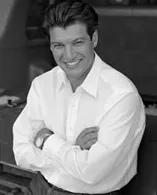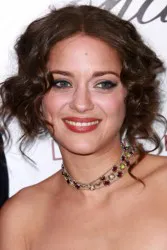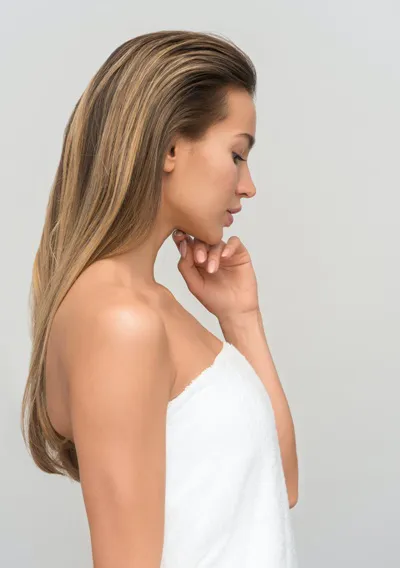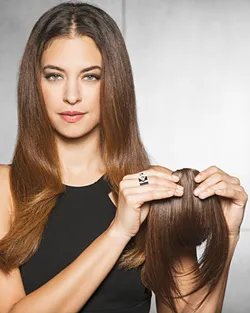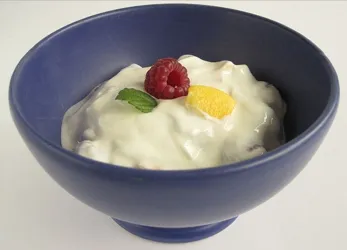
Hair Extensions The Safe Way
IntroductionSo you want to get Hair Extensions but you've heard the horror stories and you're petrified that you'll end up bald, ugly and a lot poorer when it's all over? Well, if you don't do your homework then of course this could happen. But there's a way to have beautiful hair using Hair Extensions without damaging your own hair, and in fact allowing your natural hair to grow longer and healthier in the process. Where Do I Start?There are many different types of Hair Extensions on the market, but for the sake of simplicity we will focus on two main types of application methods: Individual Strands and Wefts Individual Strand ExtensionsThe Individual method involves taking small amounts (maybe 20-50 strands) of extension hair (natural or synthetic, but we'll get to that later) and applying to small sections of your own hair by either weaving in, heat fusing, gluing, clamping with metal rods or using waxes and polymers. All of these methods (except for the clamping which is self explanatory) involve coating your own hair with a chemical or foreign substance.These extensions usually only last a few months before they have to be taken out and completely re-done. The main problem with this method is taking the Hair Extensions out without damaging your own hair. Many people who sell this method to clients will swear that there is no damage to your own hair, but one hair extension expert told me that "in 17 years of doing hair extensions we have yet to see a client who has previously had the individual method applied without damage to their own hair. Without spelling it out I will leave it to your imagination what might happen to your own hair if you melt some plastic onto it or glue or clamp something to it". Note: For a more detailed explanation of the Individual method check out Karen's article "Hair Extensions The Good, The Bad and The Ugly" on this site. So, enough about the Individual method, what I'm writing to tell you about is the way to have gorgeous hair instantly without damage. But first, a little about hair. Good Hair, Bad Hair - What's The Difference? Other Related Articles Hair Extensions & Related Articles Hair Extensions - The Good, The Bad & The Ugly Do It Yourself Hair Extensions: TiffanyTwist Hollywood Hair HairTopia Hair Vitamins HairTopia Hair Vitamin Facts Hair Guru Barbara Lhotan Visits HairBoutique.com For Marathon Hair Extensions And Consultations Hair comes in many qualities and apart from the method of application, the quality of your hair extension hair will determine whether or not they will look real, and how long they will last. Please Note: The following comments on hair quality are meant as a guide only and are relevant to matching the hair strands of Caucasian people. The Asian and African hair strand is different in texture and structure and these comments may not apply. A trusted Hair Extensions artist with experience dealing with the African hair strand will be able to give you the best advice in matching your hair with the extensions. Bad Hair - Anything SyntheticUnless you want to look like you've got a shredded plastic bag stuck to your head avoid it at all times. Synthetic Hair is basically plastic and will NEVER look like you grew it (unless you are 12 inches tall and your name is Barbie). Synthetic hair is however, great for dreadlocks - but that's another story.
Not Great Hair - Asian Hair (unless you are Asian)This hair is a course hair strand and grows naturally very dark (black) and very very straight. Use it if you are Asian and you do not color your hair and you want the sleek, dark look. Only buy Asian hair that has been colored/permed if you don't expect to wear the extensions for a long time and you can't afford anything else. O.K Hair - European Quality HairThis is basically NOT European Hair but is the best of the Asian, Pakistani, Indian hair. Same as the above. Don't expect it to last. Good Hair - European HairThis hair mostly comes from southern Italy and Spain and usually is grown very dark. Some of it is naturally straight, some naturally wavy. European Hair is what most people use for Extensions. It is durable and looks good and it will last up to a year if cared for properly. All of the Human Hair above starts off very dark then has it's color stripped back to nothing and then it is re-tinted (usually using fabric dyes not hair color) to all the shades available. This means that if you want platinum blonde hair it has gone through a massive chemical process to get to that color. One of the main disadvantages of all these types of hair is the inability to change your color. Because of the chemical processes the hair has already gone through before you even see it, putting hair color on top of it will cause the hair to break down and fall apart. So, if you use any of these qualities of hair make sure you are certain you have chosen the right color or color blend. If you have highlighted (streaked) hair make sure you have your weft maker recreate your highlights (using different colors) in the wefts so that they match your own hair. The Best Hair - Raw/Virgin Hair?Does Russian hair really exist or it is the result of great marketing spin and hype? Long term industry hair traders often express the opinion that unless there is a paper trail to absolutely prove the existence of "Russian hair", it doesn't exist. Sellers of Russian hair claim this hair is like gold, but is it really? Or does it just cost as much as gold nuggets? Many years ago before Russia, Poland and surrounding areas were modernized, hair from these locations were more readily available, as communism fell, natives of these two countries started cutting, coloring and chemically treating their hair which rendered it no longer viable for hair extensions. Many hair dealers question whether hair deals that claim that Russian hair is is grown in places near the Arctic Circle is fact or fiction. Whereas genetic factors may have ensured that this hair was of the utmost quality before the fall of Communism, modernization may have ended the guarantee of this quality. According to Russian Hair marketing gurus, this hair has been grown for generations by the same families specifically to be cut and sold. It has never been chemically treated in any way (blonde hair is grown on a blonde head) and as such is much better suited to coloring and perming if necessary. What is not mentioned is that ALL hair imported into the United States must be boiled and processed to meet US import standards. Which means the hair is no longer virgin since it has been treated for importation. If you are determined to acquire what is known as Russian hair, if it really is Russian, ask for iron clad paperwork to prove the origins of the hair. Why? Hair marketed as "Russian" will be extremely expensive and it is important that you are indeed getting hair from Russia. If the hair broker can't prove conclusively the origins of the hair, beware. If you can prove the hair is truly Russian and have the deep pockets to purchase it, than by all means give it a try. Wefts - Hand Made or Machine Made? Other Related Articles Hair Extensions & Related Articles Hair Extensions - The Good, The Bad & The Ugly Do It Yourself Hair Extensions: TiffanyTwist Hollywood Hair HairTopia Hair Vitamins HairTopia Hair Vitamin Facts What is a weft? A weft looks like a little curtain of hair attached together at the top and free flowing at the bottom. Wefts can be made by machine, but the best wefts are handmade. Your Extensions artist should be able to make them for you. The benefit of having them handmade is that you can match your own hair color perfectly as the color can be blended in the making process. Machine made wefts come in continuous widths and are then cut to size. Handmade wefts are custom made to suit your head perfectly. Handmade wefts tend to last much longer and are generally thicker than machine made ones. Machine made wefts are usually made from the lesser qualities of hair and very rarely can you find European Hair machine made wefts. You cannot buy virgin hair machine made wefts. The basic choices come down to quality and price. If you want your hair to look real go for at least European hand made wefts, and if you can afford it (and find it - it is very rare) definitely go for the raw/virgin hair. We exclusively deal with hand made wefts from raw/virgin hair. How Is It Applied?O.K. You've got your hair - what now? Wefts are attached to your head by sewing them to a tiny braid (we will call it a track from now on) made out of your own hair. The track (known to hairdressers as a corn-row) runs horizontally around the back of your head. The tracks are done in the middle of your scalp underneath your hairline so you can't see them. The crown area of your own hair covers the top track making the extensions seem invisible. The number and size of tracks matches the number and size of wefts. The wefts and tracks ideally should be made in different sizes in order to match exactly the way your hair would look if you had grown it that way yourself. Depending upon how much hair you need depends on how many tracks you have. For example: If I had hair to my chin and I wanted hair to my bra line (about 18" long) I might need 5 or 6 tracks/wefts depending upon my current haircut. If I had hair to my shoulders that was thin and stringy and I wanted it thicker and more luscious but the same length I might need 2 or 3 (or more) tracks/wefts. Once the tracks are done, the wefts are sewn to them and then your own crown area hair is blended with and combed over the extensions. From now on you have to think of the extensions as YOUR HAIR. How Do I Look After Them?You look after Hair Extensions the same as you would do long hair that you grew yourself. If you have never been able to grow your hair long before it is probably because you are killing it just as quickly as it grows. Here's a few tips:
What Happens Next?Every 6-8 weeks (average) your own hair will have grown about 1 to 1 1/2 inches. The braids will still be intact and the wefts will still be attached to the braids. At this time you will need to return to your Extensions Artist and have the wefts removed from the braids and checked for any product build up, damage etc. The braids are then undone and redone back against your scalp and the same wefts sewn back on to the new braids. Voila! You look beautiful again. Hair Extensions F.A.Q'sHow long can my extensions be?You can have any length you want up to about 26"-30". Any natural hair over this length is about 8 - 10 years old at the ends (i.e. it took the person that long to grow it for you) and as such loses quality. Also, anything longer than this puts extra weight on your scalp which may lead to uneven pressure and damage to your own hair. The best looking hair extensions for average height women are usually around 22" or less. Our most popular length is 18" which is to your bra line. How much are they?How long is a piece of string? Someone will do it for you for a few hundred dollars while others will charge thousands. Ask questions. Work out what kind of hair you need. Look at your budget. Remember - there is upkeep costs involved and these may range anywhere from $20 to $60 per track every 6-8 weeks. Don't pay thousands of dollars for cheap hair. Don't expect good hair for peanuts. Make sure you see the exact hair to be used first. You will pay more for better quality hair (European or Virgin) and you will pay more for hand made wefts. I believe it is best to get the best possible product and for that you will pay a premium price. But your hair will look great, it will last and you will feel terrific! Can I wear my hair up?Sure, the Extensions should not be applied any lower than the base of your scalp (about even with the middle of your ears) and so your hair under this point covers the extensions while you wear it in pigtails, ponytails, french twists, french braids etc. How do I know my Extensions Artist is a professional?Now this is a hard one. Anyone can lie to you, so be aware. Ask to see photos (before/after). Ask if you can contact one of his/her long term clients. Most hair extensions clients like to remain anonymous but there is always at least one who would love to let the world know what a great job they had done on their hair. Ask how often the average client needs to replace the hair (6 months, 2 years etc). After reading this article, if you know more than the Extensions artist then go find another one. Does it hurt? Will it pull my hair out?No, no NO!!! If it hurts get out of there! The Extensions artist should braid the tracks firmly but comfortably. The tension should be even all over your head with no points pulling or hurting. Do not put up with someone telling you it has to be really tight in order to be secure. Pulling your hair out is not the idea. You will know you have something on your head for the first day or two but after that you won't even feel that they are there. What about my re-growth. I'm a natural brunette but want blonde extensions.Easy. The colorist just has to work around the extensions. This makes your color cheaper because effectively you only color the crown and hairline. It also means that the hair in the braid remains virgin and when you eventually have the extensions off your own hair is in brilliant condition. For more information on Hair Extensions check out the following resources...
Social Media Network InformationPlease follow me on Twitter at: http://Twitter.com/HairBoutique. I look forward to meeting new people Thank you for visiting us at The HairBoutique Blog and for leaving your comments. They are very much appreciated. We apologize in advance but must remove any direct advertisements or solicitations. With Terri Robert-Edwards |
| If you want to talk more about this or other hair care articles on HairBoutique.com or anywhere else, please post a message on HairBoutique.com's Hair Talk Forums.
|
Social Media Network Information
Please follow us on Twitter at: https://Twitter.com/HairBoutique. I look forward to meeting new people from all walks of Twitter and learning from their Tweets.



